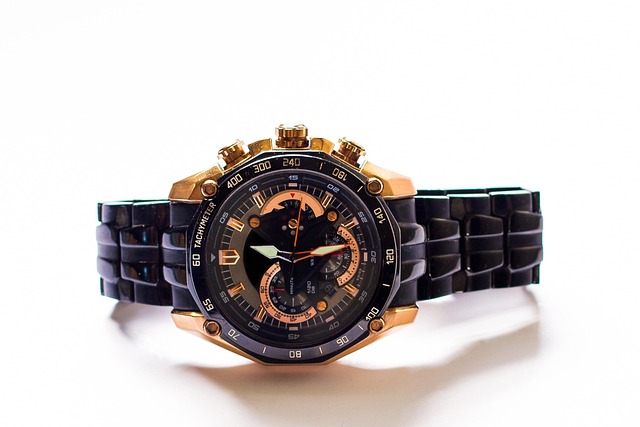Repossessed Watches 2025 Guide
Looking for repossessed watches and want to know where to start? This guide shows where buyers typically find them lender and police auctions, bankruptcy liquidations, certified resellers and curated marketplaces and how to spot fresh inventory when it appears. Learn practical search tactics like setting saved filters and alerts, tracking auction calendars, reading lot notes fast and comparing total cost including buyer’s premium, shipping, tax and potential service. See the checks many buyers use before bidding or buying, from quick authenticity signals to service history and return policies, plus safe payment and inspection options. Editorial information only no prices, endorsements or availability guarantees; always confirm details with the seller or platform.

The repossessed watch market has evolved into a legitimate avenue for acquiring high-end timepieces at substantial discounts. Financial institutions, law enforcement agencies, and specialized auction houses regularly offer these watches to recover debts or clear evidence storage. Smart buyers who understand the process can find genuine luxury watches at prices often 30-70% below retail value.
Where to Find Repossessed Watches Auctions Lenders Police Sales Certified Resellers
Repossessed watches surface through multiple channels, each with distinct characteristics and requirements. Banks and credit unions conduct periodic auctions to liquidate collateral from defaulted loans, typically advertising these events through local newspapers and online platforms. Police departments hold surplus property auctions quarterly or annually, featuring watches seized during investigations or unclaimed from evidence storage.
Certified resellers like Heritage Auctions, Bonhams, and regional auction houses specialize in luxury goods liquidation. These professionals authenticate items and provide detailed condition reports, making them safer options for inexperienced buyers. Government surplus websites and bankruptcy court auctions also feature repossessed luxury items, though these require more research to verify authenticity.
Set Marketplace Filters and Alerts to Spot New Listings Fast
Efficient hunting for repossessed watches requires systematic monitoring across multiple platforms. Online auction sites like eBay, LiveAuctioneers, and specialized watch platforms allow users to create saved searches with specific brand, model, and price parameters. Setting up email alerts for keywords like “estate sale,” “bank liquidation,” or “police auction” helps identify opportunities quickly.
Social media groups and forums dedicated to watch collecting often share insider information about upcoming auctions. Following local auction houses on social platforms provides early notice of consignment sales that may include repossessed items. Professional buyers recommend checking these sources daily, as the best deals often appear and disappear within hours.
How to Read Auction Lots Buyer’s Premium Fees and Service Needs
Auction lot descriptions contain crucial information that determines true purchase costs and post-sale requirements. The buyer’s premium, typically 10-25% of the winning bid, adds significantly to the final price. Some auctions charge additional fees for payment processing, shipping, or handling that can increase costs by another 5-10%.
Lot descriptions should specify the watch’s working condition, completeness of original components, and any visible damage. Terms like “as-is” or “no warranty” indicate higher risk purchases that may require expensive repairs. Understanding these details helps calculate the total investment needed to own and potentially service the timepiece.
Quick Authenticity and Condition Checks Serials Service Records Return Policies
Authenticity verification represents the most critical aspect of buying repossessed watches. Legitimate sellers provide clear photographs of serial numbers, case backs, and movement details. Cross-referencing these numbers with manufacturer databases or consulting authentication services helps confirm legitimacy before bidding.
Condition assessment requires examining case scratches, crystal clarity, crown function, and bracelet wear. Service records, when available, indicate maintenance history and potential future costs. Many repossessed watches lack original boxes and papers, reducing resale value by 20-30% compared to complete sets. Understanding return policies protects buyers from fraudulent or misrepresented items.
| Provider Type | Average Discount | Buyer’s Premium | Authentication Level |
|---|---|---|---|
| Bank Auctions | 40-60% | 10-15% | Basic |
| Police Sales | 50-70% | 5-10% | Minimal |
| Certified Resellers | 30-50% | 15-25% | Professional |
| Online Platforms | 20-60% | 10-20% | Variable |
Prices, rates, or cost estimates mentioned in this article are based on the latest available information but may change over time. Independent research is advised before making financial decisions.
Successful repossessed watch purchasing requires patience, research, and realistic expectations about condition and completeness. While significant savings are possible, buyers must factor in authentication costs, potential repairs, and missing accessories when calculating true value. The repossession market offers genuine opportunities for collectors willing to invest time in learning the process and developing relationships with reliable sellers.
Building expertise in specific brands and models helps identify exceptional deals while avoiding problematic purchases. Many successful buyers start with lower-value pieces to gain experience before pursuing high-end acquisitions. The repossessed watch market rewards knowledgeable, patient buyers with access to luxury timepieces at accessible prices.




